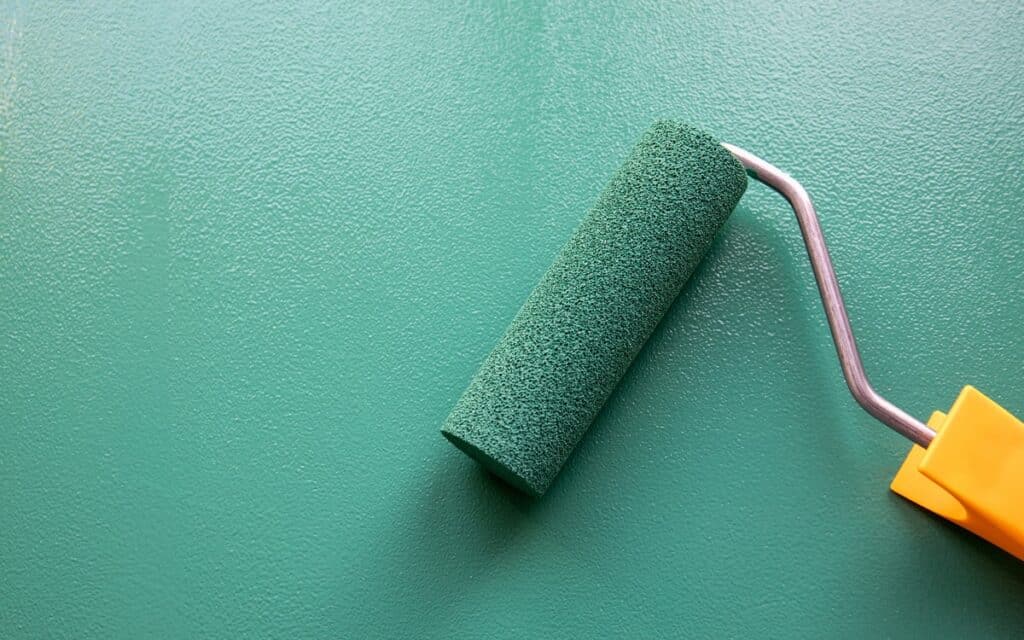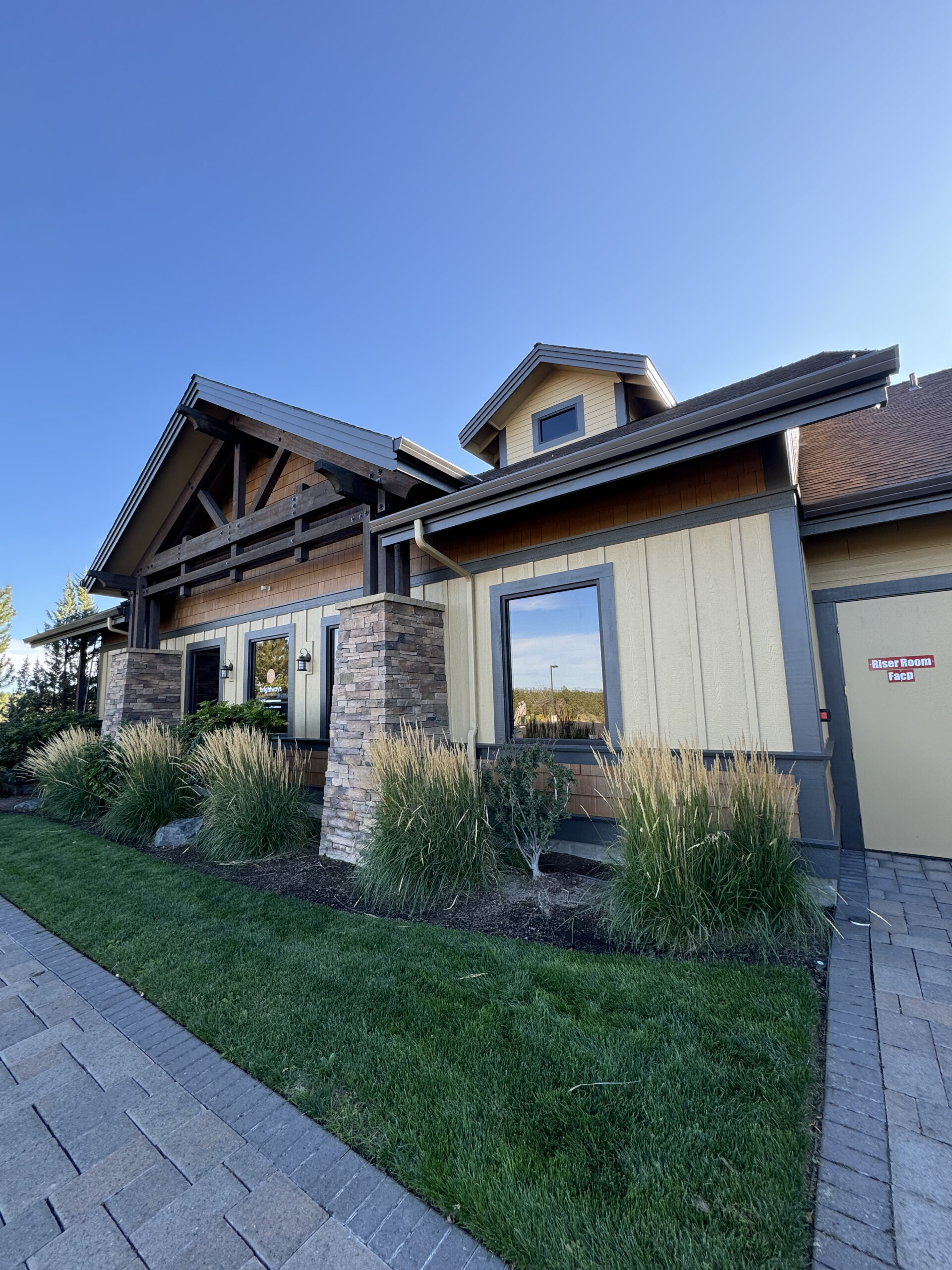When it comes to painting your home, professional house painters often recommend low-VOC options — and for good reason. If you’ve been wondering about the difference between low-VOC paint vs regular paint, you’re not alone. More homeowners today are looking for healthier, eco-friendly alternatives for their interiors, but many still aren’t sure whether the switch is worth it.
Let’s break it down.
Key Takeaways:
- Low-VOC paints emit fewer harmful fumes, making them safer for indoor air quality.
- Regular paints may contain higher levels of VOCs, which can contribute to respiratory issues, headaches, and long-term health effects.
- Low-VOC options are now widely available in durable, high-performance finishes.
- Understanding the pros and cons can help you make an informed choice before your next home painting project.

What Are VOCs, Anyway?
VOCs, or volatile organic compounds, are chemicals found in many building materials — including paint. These compounds evaporate into the air as paint dries, and some of them can be harmful when inhaled.
Traditional paints often contain high levels of VOCs to help with adhesion, durability, and drying time. But the health risks associated with VOC exposure — especially in poorly ventilated indoor spaces — have led to a rise in demand for low-VOC alternatives.
Health Concerns: How Paint Affects Indoor Air Quality
One of the biggest selling points of low-VOC paint is its impact on indoor air quality. Traditional paint can release fumes for days or even weeks after application, causing symptoms like:
- Headaches
- Dizziness
- Eye, nose, or throat irritation
- Allergic skin reactions
In extreme cases or with long-term exposure, VOCs have been linked to more serious health issues, including liver and kidney damage.
Low-VOC paint, on the other hand, releases significantly fewer of these chemicals into the air. For homes with kids, pets, or anyone with asthma or allergies, it’s often the safer choice.
How Low-VOC Paint Compares to Regular Paint
Let’s break down the comparison between low-VOC paint vs regular paint:
| Feature | Low-VOC Paint | Regular Paint |
|---|---|---|
| VOC Levels | Fewer than 50 grams/liter | Up to 250+ grams/liter |
| Odor | Minimal | Strong and lingering |
| Drying Time | Often faster | Can take longer |
| Durability | Comparable with newer formulas | Traditionally more durable |
| Color Options | Extensive | Extensive |
| Cost | Slightly higher | Lower upfront cost |
Today’s low-VOC paints have come a long way in terms of performance. While early versions didn’t hold up as well or offer as many color choices, that’s no longer the case. Brands have improved formulas to deliver the same quality as traditional options.
Is Low-VOC Paint Always the Best Choice?
Not necessarily. It depends on your needs. Here’s when low-VOC paint makes the most sense:
- You’re painting bedrooms, nurseries, or living spaces where air quality is a priority.
- You want to limit odor and ventilation time after painting.
- Someone in your household has asthma or chemical sensitivities.
- You’re working with professional house painters who specialize in eco-friendly products.
On the flip side, if you’re doing a quick garage or exterior paint job and ventilation isn’t a concern, traditional paint might still do the trick, especially if cost is a big factor.
The Environmental Angle
Low-VOC paints are also better for the planet. Lower emissions mean fewer pollutants entering the atmosphere, contributing less to smog and ozone depletion.
For homeowners looking to reduce their environmental impact, choosing eco-friendly paint is a smart step — especially when paired with other sustainable choices like recycled materials and energy-efficient fixtures.

What About Zero-VOC Paint?
You might also see some paints labeled as zero-VOC. These formulas contain less than 5 grams of VOCs per liter — essentially none. However, be cautious: adding colorants can increase VOC content, so always check the final product specs.
Zero-VOC is ideal for ultra-sensitive individuals or when air quality is a top priority. Just keep in mind that these paints may have slightly different application properties and might require additional coats.
Do Professional House Painters Recommend Low-VOC Paint?
Yes. More and more professional house painters are recommending low-VOC or even zero-VOC options, especially for indoor projects. Painters who care about their clients’ health and the environment often keep these products as part of their go-to kit.
Also, because today’s low-VOC paints perform on par with traditional products, pros can still achieve beautiful, long-lasting results.
Tips for Choosing the Right Paint
If you’re still not sure which way to go, consider these tips:
- Ask your painter: A qualified professional can recommend the best product for your project.
- Read the label: Look for third-party certifications like GREENGUARD Gold or Green Seal.
- Ventilate: Even with low-VOC products, good airflow helps reduce lingering odors.
- Test a sample: See how the paint performs in your space before committing.
Final Verdict: Is Low-VOC Paint Really Better?
When comparing low-VOC paint vs regular paint, the answer is: in most cases, yes.
For indoor spaces where health, comfort, and sustainability matter, low-VOC paint is a smart, modern choice. It offers the same great colors and coverage with fewer chemicals and less odor. And with so many professional house painters making the switch, you won’t be sacrificing quality.
That said, every home project is different. If you’re unsure what’s best for your space, your local painting expert can guide you.
Ready to Paint Without the Headaches?
If you’re planning your next home makeover, choose a painting solution that keeps your family healthy and your space beautiful. Contact West Rivers Painting today at 541-305-8978 to speak with trusted professional house painters who can help you choose the best low-VOC option for your project.




